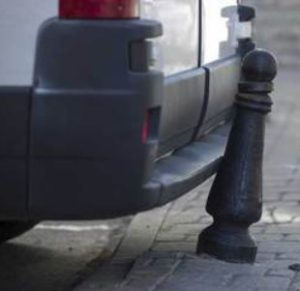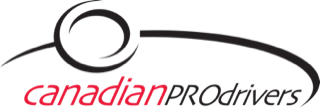 One of the most common collisions occurring with fleet companies is backing into stationary objects. These collisions are preventable. It is important for drivers to take note of any hazards in their backing path.
One of the most common collisions occurring with fleet companies is backing into stationary objects. These collisions are preventable. It is important for drivers to take note of any hazards in their backing path.
The key to preventing this type of incident is to manage proximity to specific objects or obstacles. For example, avoid parking near a light pole or add a spotter if there is limited view behind your vehicle. It is important to take your time and assess the space, reverse at a speed no greater than a walking pace, and continuously scan 360° around your vehicle using mirrors, backup camera, frontal and tail swing.
Here are some tips:
- In accessing a parking location, the type of vehicle you are driving will determine the risk associated with each choice. It might be safer to park in a parking lot, curb side of the road, in a customer’s driveway, or in a nearby vacant lot. Drive around and look for a parking location with lower risk.
- When choosing a parking spot, it may be best to pick one that is furthest away from the entrance and in an area that may have less objects, people, and traffic.
- When you are in a parking lot, keep your eyes moving. Look for movement of people and cars, reverse lights, signal lights, brake lights, car exhaust, the angle and rotation of tires. These are referred to as Ground Viewing Habits (GVH).
- When looking for a parking spot take note of poles, trees, high curbs (may hit exhaust or bumper), other vehicles, and space. It is best to pull through to a parking spot or if not possible, reverse into a parking spot. When you depart, you will have a full view of traffic and pedestrians.
- When backing into a parking spot don’t rely on your back-up camera alone. Drivers need to continuously check 360° around the vehicle for space and potential hazards. Keep your eyes moving.
- It is important to be spatially aware (height, width, length) of your fleet vehicle and how much clearance you have around. If you are unsure of your spacing, stop, walk the backing path and re-evaluate your parking choice. A different spot may eliminate the risk.
- If parking at a job site with limited space, ask a co-worker to assist by being a spotter. The spotter should always be in view of the driver, be heard by the driver, be understood by the driver (hand signals), and never be in the backing path of the vehicle. If the driver can’t see the spotter, stop. The spotter helps provide a visual behind your vehicle. Remember to move slowly.
Position your vehicle in a way that decreases the amount of risk to you, your vehicle and company. Drive safely!
